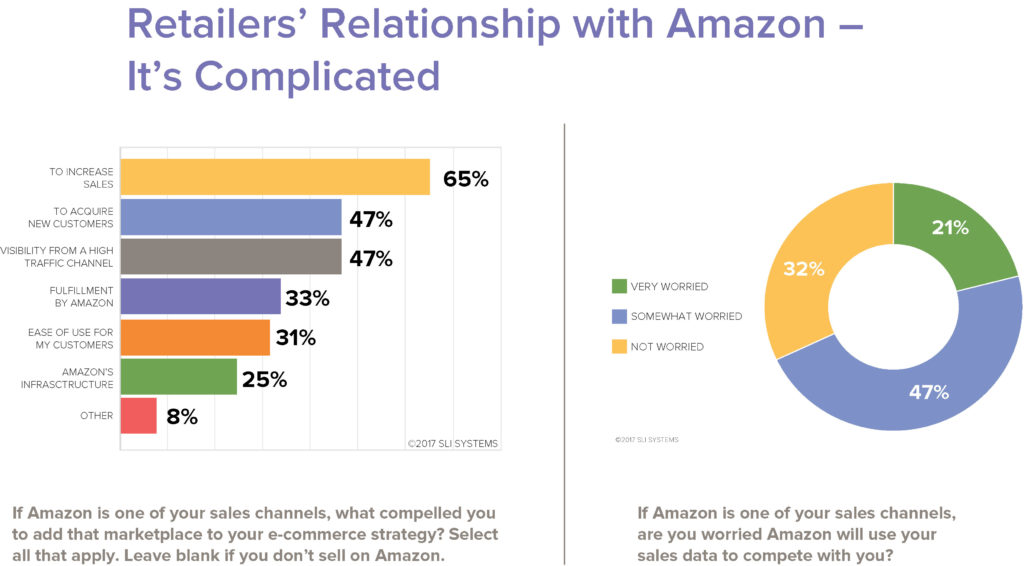
Retail analysts and industry experts have debated for years now: Is Amazon a friend or foe to e-commerce merchants? It’s not so black and white, according to our data.
Back in April in our Q1 EPIC Report, we learned only 6% felt Amazon posed less of a competitive threat to their online businesses compared to the same quarter the year before. The data revealed merchants leaned toward viewing the e-commerce giant as more foe than friend.
We took a different look for the Q2 EPIC Report, asking those who sell via Amazon why they do so. The reasons pointing more toward friend than foe are many:
- 65% added Amazon as a channel to increase sales
- 47% did so to acquire new customers, which was tied with gaining visibility from a high traffic channel (also 47%)
- 33% added Amazon as a channel for fulfillment by Amazon
What’s more, Amazon Prime Day’s Christmas-in-July effect had far-reaching implications even for non-Amazon retailers. Salesforce analyzed activity from 500 million online shoppers and found online sales for other retailers grew 44% on Prime Day 2017 compared with last year’s event. The same report also found non-Amazon retailers benefited from a 34% higher conversion rate compared with the day before Prime Day.
Prime week also spiked mobile purchases for other retailers. Analyses done by Liftoff looked at mobile app activity during Prime week compared to the six weeks prior. According to Liftoff, “the percentage of users who installed a non-Amazon shopping app and made a purchase in the app increased by a whopping 46.76%”.
It would seem Amazon is clearly friend material. But then again, maybe not.
The perks of leveraging the giant come with some concern. The Q2 EPIC Report also found nearly 70% of those that sell on Amazon are somewhat or very worried Amazon will use their sales data to compete with them, further highlighting this complex relationship.
Recently, Amazon informed sellers of a new policy for refunds. According to CNBC, the rules for items shipped by merchants are now the same as those fulfilled by Amazon. This “will totally crush small businesses that fulfill their own orders,” a third-party seller told the major news outlet.
While Amazon sellers can boost sales thanks to Amazon’s massive consumer volume, the price they pay for this access is loss of control. Amazon owns the customer. And the shopping experience is tuned to drive the most sales regardless of who the seller is.
Internet Retailer recently shared this example: Rain Design has sold an aluminum laptop stand on Amazon for more than a decade. The best-selling product is about $43 and has thousands of 5-star reviews. According to Internet Retailer, “last year, AmazonBasics started selling a similar product at half the price, and sales of the Rain Design original have slipped.”
So, is Amazon a threat? Yes.
Can Amazon also help you succeed? Yes.
Amazon is your frenemy.
Pat Petriello, senior strategist for CPC Strategy, said it best to The Washington Post last month: “Large, household brands that had previously viewed Amazon as a fierce competitor that was eating everyone alive, are now viewing them as a necessary partner. They’re saying, ‘Our customers are there, our competitors are there, so we need to have a presence there.’”
Whether you’re an Amazon friend, foe, or frenemy, the key is to develop a direct relationship with your Amazon customers so that you continue building your brand and loyal fan base.
Findings in the SLI Systems EPIC Report for Q2 2017 are based on a survey conducted between May 4 – June 2, 2017. For a copy of the full chart-packed report, visit: http://sitesearch.sli-systems.com/epic-report-q2-2017.







